The famous Pacific Crest Trail winds its way across the West Coast from the Mexico to Canada. This epic 2,650-mile backpacking corridor that connects the Sierra Nevada and Cascade Ranges is enjoyed by thousands of outdoor enthusiasts every year.
Although it is called the “crest,” the trail seldom crosses directly over mountain summits. However, the great news is that MANY side trails offer short hikes to prominent and spectacular summits! Whether you are taking on a full thru-hike, heading out for multiple days, or hitting the trails for a weekend or single-day adventure, dozens of incredible peaks that don’t require special climbing gear lay just off the Pacific Crest Trail, and they are waiting for you to explore them!
Mount San Jacinto
The San Jacinto summit rises from a hot, sandy desert floor to over 10,000 feet. The PCT climbs up the southern ridge from Whitewater Preserve through the Sand to Snow National Monument, and there is a short 5-mile trail that leads to the summit and returns back a few miles north. Many additional trails connect the summit to nearby places of interest. The Marion Mountain Trail and Devil’s Slide Trail run to and from nearby Idyllwild, and the very strenuous Cactus to Clouds Trail and a tram connect the summit with Palm Springs.
San Gorgonio and San Bernardino
A few miles north and across a wide desert valley lies the San Bernardino mountains. The Pacific Crest winds through the eastern edge of this area, but San Gorgonio is still quite close and can be accessed via the Fish Creek Trail near Heart Bar Campground. This trail to the top will be a much quieter experience since it is remote and less utilized. From San Gorgonio, San Bernardino peak can be accessed by hiking down the Momyer Creek Trail and then heading west from Dollar Lake Saddle junction along the San Bernardino Peak Divide Trail. Popular hikes when accessed by a vehicle are round trips via the Moymer and Vivian Creek trails.
Mount Baden-Powell
Literally a quarter-mile spur trail from the PCT, the 9,400-foot Baden-Powell is an easy summit after already climbing most of the mountain. From Angeles Crest Highway about 10 miles west of Wrightwood, the route up Baden-Powell leaves from Vincent Gap. After 3 miles of steady climbing, the summit junction appears along with a weathered tree that is over a thousand years old. Atop the mountain is a register and an American flag for celebrating. Heading back down, the PCT continues many more miles to Little Jimmy Spring and Campground (typically the only water north for miles on this dry section of trail).
Mount Whitney (via Crabtree Meadows)
California’s Sierra Nevada mountain range is home to the tallest point in the continental United States. Who wouldn’t want to summit that? From the PCT, the Whitney Summit is a well-travelled 8.7 miles from Crabtree Meadows. Guitar Lake makes for a stunning break to charge up or recoup from the Whitney summit. Coming from within the Sierra, the climb to 14,500 feet is noticeably less than approaching from the east via the Lone Pine Whitney Portal along Highway 395.
Half Dome and Cloud’s Rest (via the John Muir Trail)
Arguably one of the most iconic geological formations in the western United States, Half Dome is a challenging but rewarding summit. Cloud’s Rest is a close second place in terms of views, and it requires less permitting to visit. From the Pacific Crest Trail, getting here requires either hiking from Tuolumne Meadows or taking a bus ride into the Yosemite Valley. Coming from either side will use the John Muir Trail as the approach corridor for Half Dome. Cloud’s Rest is just a short way further north up the John Muir Trail, and the junction is well marked. As an alternate, it offers a stunning view of the entire Yosemite area.
Sierra Buttes
The town of Sierra City sends PCT hikers on a farewell climb out of the river valley from the south. The Sierra Buttes become visible near the top, and at the very summit a fire tower stands tall at 8,600 feet. The summit and tower can be reached from the Sierra Buttes side trail that branches off the PCT. An alternate approach is to head up from nearby Packer Lake on the northern side of the mountain.
Mount Thielsen
After circling around Crater Lake (also well worth a side trip!), the next northbound attraction on the Pacific Crest is Mount Thielsen. This jagged peak is not quite as difficult to climb as it appears, although it is a definitely more challenging than the previous “walk-up” routes to summits.The PCT intersects with the approach trail, the West Ridge Route, at a well marked junction. Rope and harness are not required on this climb per-se, but use caution and don’t ascend beyond personal comfort and ability levels (especially without a partner). As the mountains become more prominent with the PCT moving northward, be mindful of weather. Pop-up storms, a particular attraction for lightning at this peak, and the very loose rock and scree going up can make for very dangerous conditions is the weather turns foul.
Diamond Peak
One of the first major Cascade volcanos along the trail is Diamond Peak. With several secondary peaks and a wide base surrounded by beautiful forests and lakes, this mountain is a fun summit and a relatively easy side trip. After passing Summit Lake, the Diamond Peak spur trail is to the west in about 4 miles. Once at the top (follow rock cairns to reach the true summit), a clear day will yield stunning views all around: Three Fingered Jack, Three Sisters, Mount Washington, Mount Jefferson, and possibly even Mount Hood to the north, with Mount Thielsen and Crater Lake at the south.
South Sister
South Sister, the southernmost of three stunning peaks in the Three Sisters Wilderness, is an incredible side trip from the Pacific Crest Trail. To get to the South Sister Climber Trail from the PCT, take the Moraine Lake Trail east (or alternatively, Devil’s Lake trail a few miles north of that). The South Sister Climber junction heads north straight up the mountain. Moraine Lake at the climber trail junction is a reliable source of water to fill up before the climb, but there is also a small aqua blue lake about two-thirds of the way up (just below Lewis Glacier), and Teardrop Lake is near the summit. Climbing South Sister is a great way to break up the forested Oregon woods terrain, and the summit’s view will redefine your understanding of awesome.
Mount Hood
For thru-hikers who traveled through early snow in the Sierra, Mount Hood is an ideal place to get extra use out of your crampons, ice axe, and helmet. The PCT runs right up to the base of Mount Hood near the Timberline Lodge, a perfect place for approaching the summit on established routes. You can reach the top by climbing via either the Pearly Gates or Old Chute routes from the Timberline Ski Area. An early start is required to get up and be heading down before the snow starts getting soft, so a headlamp is also necessary. Prior experience and a few simple pieces of gear are suggested because the terrain can get tricky, and there have been plenty of fatalities resulting from inadequate preparation.
Mount Adams
The Pacific Crest Trail flanks the western side of Mount Adams, and if you have an axe, crampons, and helmet, it is another non-technical but significant mountain to summit. Separate permits are required for this climb -- a Cascade Volcano Pass is required to cross 7,000’ elevation. Weather is a concern here as well because the peak is over 12,000 feet. Conversely, a clear day will yield spectacular views of Mount Rainier, Mount St. Helens, and Mount Hood.
Old Snowy
One of the last easily hiked and noteworthy summits on the Pacific Crest Trail is Old Snowy in the Goat Rocks Wilderness. The PCT alternate trail to the summit, when heading northbound, traverses a glacier on the way up to a magnificent vista of Goat Rocks area with Mount Rainier shooting up ahead and Mount Adams behind. From here, the PCT alternate returns back toward the trail and straight for Rainier along a narrow ridge called the Knife’s Edge. Old Snowy’s peak is to the southeast on the other side trail of this junction. The path is easy to follow at first, but then it gets lost among the large black rocks. Facing the top, follow around to the left past the first false summit and scramble the rest of the way to the top. From the road access, Old Snowy is in very close proximity to Goat Lake.


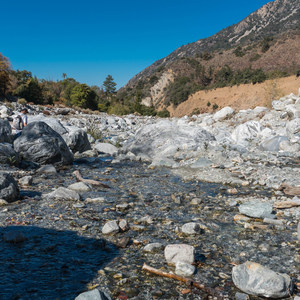

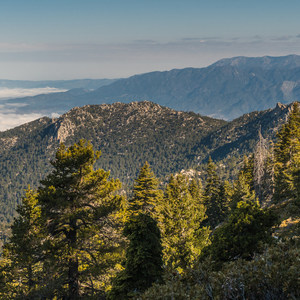
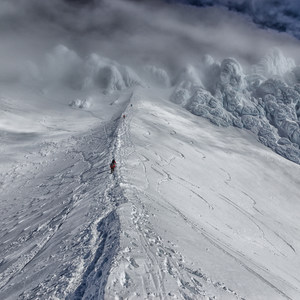
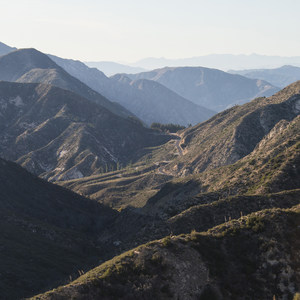
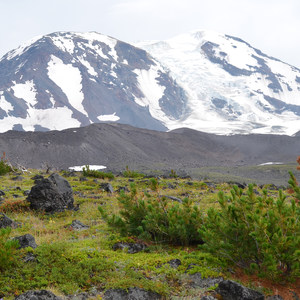
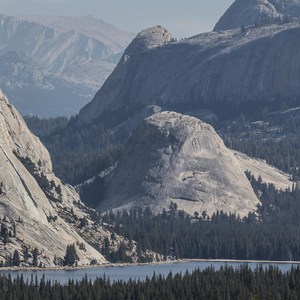
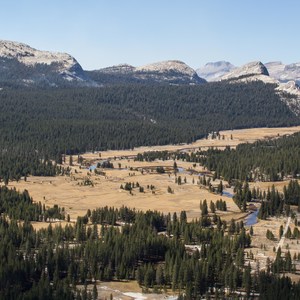



Comments
Sign In and share them.